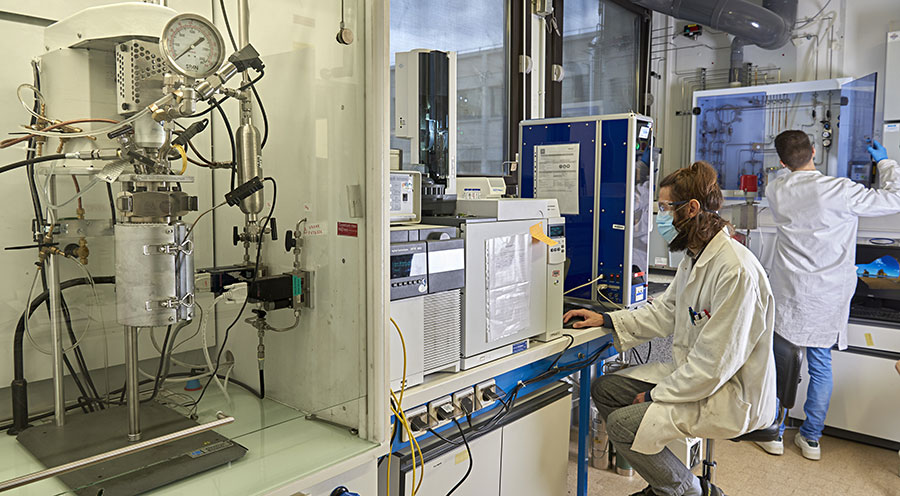The researchers were able to identify a particularly promising molecule-catalyst combination: GBL-BDO*. Not only can the GBL molecules be synthesized from renewable resources, but the molecule-catalyst combination also demonstrates lower dehydrogenation enthalpy (41 kJ/molH2) than that of conventional LOHCs. The researchers developed catalysts for both reactions and tested them in laboratory batch reactors, where they outperformed the reactions obtained with commercial catalysts. A chemical regime analysis of the batch reactor tests was then used to develop a kinetic model of the reactions.

© D. Guillaudin / CEA
A continuous reactor test bench was also designed during this phase of the research for further testing of the GBL-BDO hydrogenation-dehydrogenation reactions. The experimental results obtained in this research also led to the validation of a reactor model that factors in not only the reaction's kinetics and thermodynamics, but also its thermal and hydrodynamic aspects.
The models developed were used to design an innovative reactor technology. A patent has been filed to protect the innovation.
*gamma-butyrolactone (GBL)-1,4-butanediol (BDO)